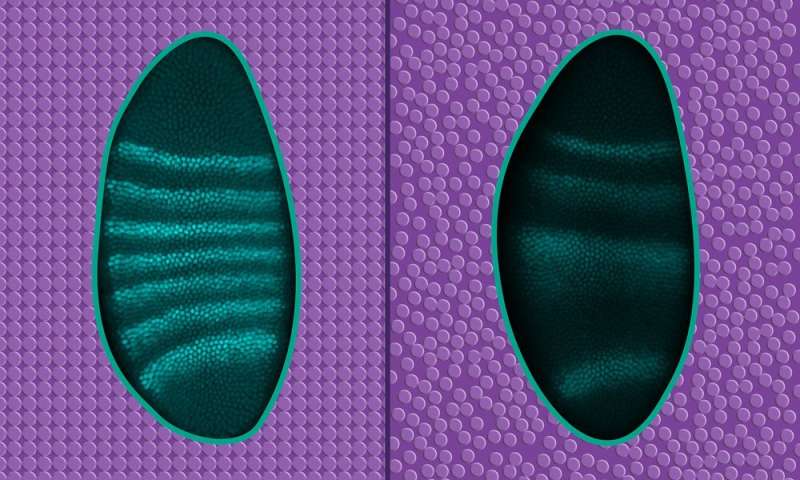From liquid to solid to drive development of membraneless organelles

Researchers at EMBL Heidelberg have shown that transition from liquid to solid is important for the function of membraneless organelles.
The term "phase transition" might initially conjure up images of ice melting or water vapor condensing on a cold glass. In biology, phase transition plays a role in processes such as lipid bilayer formation or the spontaneous de-mixing of protein droplets. In a recent paper published in Cell, the Ephrussi and Mahamid groups at EMBL Heidelberg have now shown how phase transitions in protein-RNA droplets can influence their biological function.
In order to regulate the many cellular functions within an organism, biochemical processes within individual cells must be precisely regulated in time and space. While organelles like the nucleus or the endoplasmic reticulum are enclosed by membranes and thereby physically separate certain reactions and processes from others, the cellular space also contains a different class of organelles without membranes, called condensates. Like their membrane-bound counterparts, condensates control specific functions within a cell.
In their latest study, the EMBL scientists focused on one specific mRNA, oskar, and its role in embryo development in the model organism Drosophila melanogaster (fruit fly). In the developing fruit fly egg, oskar mRNA must localize to a specific position within the cell to lay the foundation for the development of the future embryo. oskar mRNA is found in ribonucleoprotein (RNP) granules that contain proteins bound to the RNA. These are an example of membraneless condensates. What the EMBL researchers were now able to show is that these granules have solid-like properties in the developing fruit fly egg.
"Condensates are typically thought of as liquids. But we found that a solid state of oskar RNP granules is crucial for localization and function of oskar mRNA," explained Mainak Bose, postdoc in the Ephrussi and Mahamid groups, and first author of the study. "When we genetically engineered the granules in Drosophila oocytes to be liquid-like, it resulted in a multitude of defects in the developing embryos."
These findings demonstrate the importance of the physical properties of condensates for their physiological functions, something that was until now believed to be governed by their biochemical properties alone. "Our work highlights how interactions and properties at the molecular level govern the biophysical properties and functions of condensates on the cellular and even organismal scale," concluded Bose.
More information: Mainak Bose et al, Liquid-to-solid phase transition of oskar ribonucleoprotein granules is essential for their function in Drosophila embryonic development, Cell (2022). DOI: 10.1016/j.cell.2022.02.022
Journal information: Cell
Provided by European Molecular Biology Laboratory




















